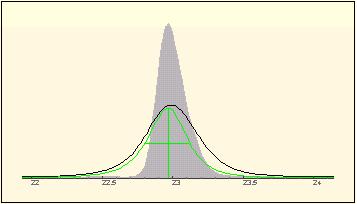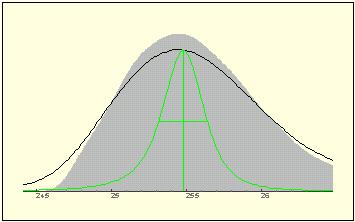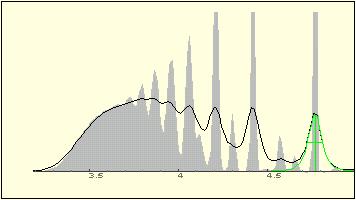Grey solid: Superresolution
Green line: Tung's Kernel
Where the width of the elugram is less than three times that of the kernel, nonuniformities are found much too high without Superresolution

e.g. Intrinsic Viscosities:
Even for distributions with moderate width, Mark Houwink paramters are calculated totaly wrong from the ratio of two channels without band correction, though the correction itself does'nt appear dramatical.
Expensive OnLine-Viscometers are useless then.
e.g. Comonomer Analyses:
The same is true here like for intrinsic viscosity: without band correction the calculated results are wrong by factors up to100%..

Where the original data just display tiny sholders, Superresolution works out baseline separated needles. Even totally invisible peaks are uncovered..
Technically, the same effect can only be achieved with columns of fourfold length, fourfold pressure and foufold analysis time.
Digital superresolution, in contrast, just requires about 1 second of computation time and no changes at all in the physical system.
